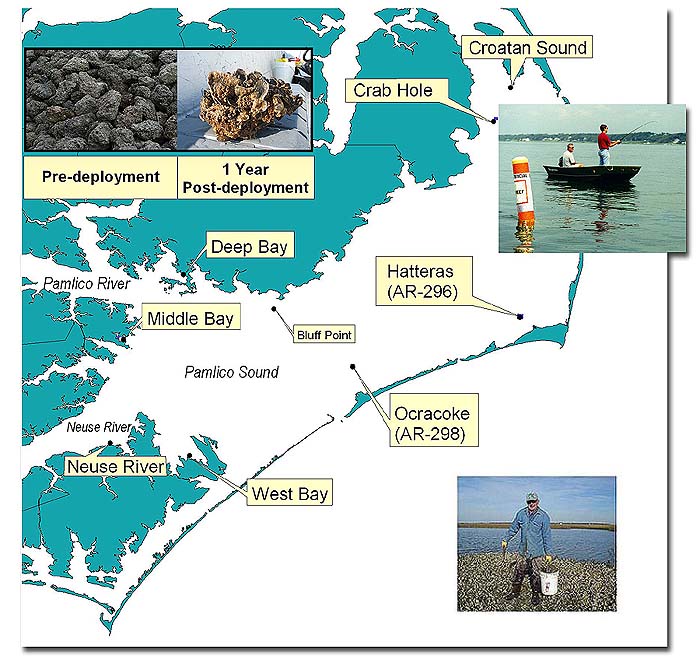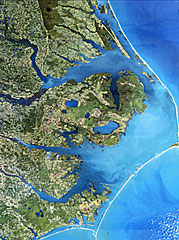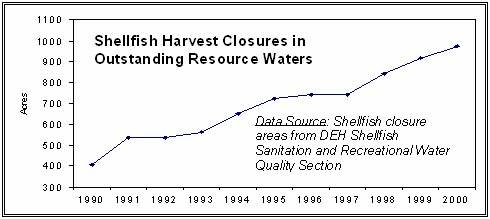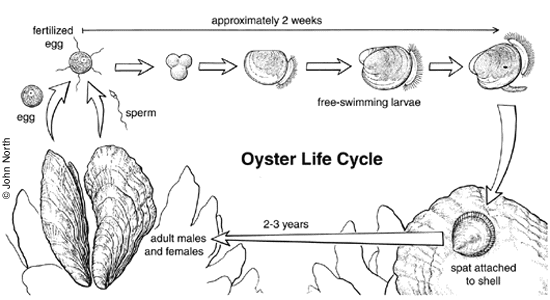 |
 |
 |
| Fig. 1: Intertidal Oyster Reef R. Colwell, NSF, 2003 Marine Biotechnology Speech |
Fig 2: Map of Oyster Sanctuaries NC Division of Marine Fisheries |
Fig 3: Pamlico Sound Salinity Map |


Oysters like company. By growing next to, and on top of each other, they form dense reefs (Figure 1). These reefs may be either intertidal (underwater only at high tide) or subtidal (underwater all the time). They also like clean water, and a certain salinity range.
Look at the two maps below. The oyster sanctuaries (Figure 2) are located in areas that once had large oyster beds. The traditional beds were depeleted by overfishing and pollution, but the salinity distribution in Pamlico Sound probably has not changed much over the years. By comparing the salinity map (Figure 3) with the locations of the oyster sanctuaries, you can learn something about the salinity ranges that oysters can tolerate. Are there any sanctuaries in fresh water (<5 ppt)? Are there any sanctuaries in really salty water (>25 ppt)?
Oyster restoration efforts are hindered by the danger of Dermo, a disease caused by a parasite. Oysters and the disease-causing parasite are adapted to the about same salinity range, but the oysters have a slight edge at lower salinities. Oysters grow normally in salinities greater than 10 ppt, but the organism that causes dermo dies at salinities below 15 ppt. Do the oyster sanctuaries appear to be in locations where the oysters could grow with minimum risk of dermo? Dermo explained: for kids and for those who want to restore oysters .
 |
 |
 |
| Fig. 1: Intertidal Oyster Reef R. Colwell, NSF, 2003 Marine Biotechnology Speech |
Fig 2: Map of Oyster Sanctuaries NC Division of Marine Fisheries |
Fig 3: Pamlico Sound Salinity Map |
When an oyster reef can no longer sustain a healthy population of oysters, that area is closed
to oyster fishing. About 1000 acres of oyster reef have been closed this century.
 |
“Increased fishing pressure and stock declines caused by diseases, poor water quality and habitat loss, have led to the collapse of this once prosperous fishery.” – NCDMF,2006 |
| The key to saving oysters is understanding their life cycle. Like many marine invertebrates they have a bipartate life cycle. That means they have an adult stage that stays in one place (the oysters on the reef) and a larval stage that drifts around for a few weeks. Where those larvae can go determines where new adult oysters can settle. Larval oysters need to find a suitable habitat; right salinity, clean water, and preferably adults nearby. Image from Maryland Sea Grant |
 |